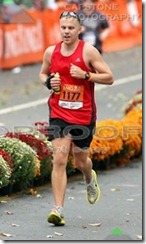 I love when I read something that makes me think – that’s exactly what happened when I read Steve Magness’ latest post on his Science of Running blog. In his post, Steve discusses his perspective on how we arrived at our current state of affairs with regard to running shoe design, how this relates to changes in observed patterns of running form over the past 50 or so years, the origins of the minimalist running movement, and where we should go from here. Additionally, he provides some comments on the Newton running form panel discussion that I presented in my previous post, some of which are rather pointed.
I love when I read something that makes me think – that’s exactly what happened when I read Steve Magness’ latest post on his Science of Running blog. In his post, Steve discusses his perspective on how we arrived at our current state of affairs with regard to running shoe design, how this relates to changes in observed patterns of running form over the past 50 or so years, the origins of the minimalist running movement, and where we should go from here. Additionally, he provides some comments on the Newton running form panel discussion that I presented in my previous post, some of which are rather pointed.
What I’d like to do here is look at the topics that Steve discussed from a slightly different perspective. Whereas Steve writes from the perspective of someone who has spent a most of his career in the high performance running and coaching world, I came to the sport seriously just over three years ago as an overweight and out of shape college professor (that’s me above showing off my pained 26.1 mile running form at the Hartford Marathon last year). While our running backgrounds and abilities clearly differ, we tend to agree on a lot of the topics we write about (e.g., form and shoes), likely since we both share a common interest in the scientific side of running. However, we also represent different running constituencies to a certain degree, and thus can look at topics like form and shoes from different angles – it is for that reason that I am writing this post.
It’s becoming clear to me that discussion of and interest in running form is growing rapidly. However, I’m also starting to see a bit of a break in discussions of form as it relates to elite runners vs. recreational runners who have no interest in setting speed records and simply want to be able to enjoy running injury free. One of the points that Steve argues in his post is that track and cross country coaches were the driving force behind the current minimalist running movement, not shoe companies like Newton or Vibram or form gurus like Danny Dreyer or Nicholas Romanov. His point is that the use of minimalist style shoes and the practice of barefoot running for the purpose of technique building have long been employed in the competitive track and cross country running world. I don’t dispute this point at all – in fact, a colleague of mine who is a former elite level 1500m runner has made this point to me (the recreationally self-competitive runner) on many occasions.
Where my perspective differs is in how these practices made it into the mainstream. I would argue that an important characteristic of the current minimalist running movement is the fact that everyday runners like myself and most of those reading this blog are now employing practices (and shoes) that used to be largely restricted to the very realms that Steve refers to (competitive track and cross country). The practices have been there all along in the competitive running world (probably varying a bit from coach to coach), but even just a few years ago very few recreational runners would have considered running regularly for a large chunk of their miles in a cross country flat. Now, I have more than a few friends who do so on a daily basis, and report that they love it. How did this happen?
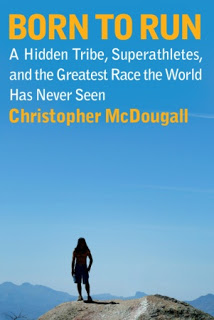 Though there were certainly people running minimalist or barefoot prior to its appearance, I view the publication of Born to Run by Christopher McDougall as the tipping point for the minimalist running movement and the current shift in form and footwear that we are now seeing. McDougall’s book, and the media explosion relating to shoes and barefoot running that followed, are what really brought the notion of minimalist running to the masses (myself included). Were it not for Born to Run, I’d probably still be pounding my heels in stability shoes, and shoes like the Saucony Kinvara or the soon to arrive New Balance Minimus would probably have never been put into production. The Vibram Fivefingers would probably still be nothing more than a freaky looking water shoe. The competitive running world may have known the value of running barefoot or training and racing in flats, but it took a mainstream book to get that information into the hands of everyday, middle-of-the-pack runners like me. Once that happened and people started experimenting with stripped down shoes and talking about their experiences, the market started to follow, and new minimalist shoe designs are now trickling out to complement the flats that have always been there – it’s exciting to imagine where we might be five years from now.
Though there were certainly people running minimalist or barefoot prior to its appearance, I view the publication of Born to Run by Christopher McDougall as the tipping point for the minimalist running movement and the current shift in form and footwear that we are now seeing. McDougall’s book, and the media explosion relating to shoes and barefoot running that followed, are what really brought the notion of minimalist running to the masses (myself included). Were it not for Born to Run, I’d probably still be pounding my heels in stability shoes, and shoes like the Saucony Kinvara or the soon to arrive New Balance Minimus would probably have never been put into production. The Vibram Fivefingers would probably still be nothing more than a freaky looking water shoe. The competitive running world may have known the value of running barefoot or training and racing in flats, but it took a mainstream book to get that information into the hands of everyday, middle-of-the-pack runners like me. Once that happened and people started experimenting with stripped down shoes and talking about their experiences, the market started to follow, and new minimalist shoe designs are now trickling out to complement the flats that have always been there – it’s exciting to imagine where we might be five years from now.
Along with the new focus on minimalist footwear came discussion on proper running form, with particular interest settling on the question of proper footstrike (whether or not that was the proper place to focus is a valid question, but it still remains a focal point for most people). Runners are now very interested in form, and it’s beginning to extend beyond just the question of footstrike to things like the role of the hips, posture, arm carriage, etc. Perhaps the bigger question, though, is where to direct people if they want to learn more about running form. Nowadays, it seems that form is largely taught in traveling clinics by shoe companies like Newton or in books, videos, or classes created or run by proponents of methods like Chi, Pose, or Evolution Running. I don’t see many elite track or cross country coaches traveling around the country to teach proper running form to the masses, and that is partly a function of the break between elite and recreational runners. Elite coaches are interested in teaching top athletes how to run as fast and as efficiently as possible (nothing wrong with that, it’s their job), whereas the major goal of most of the so-called “guru” methods are to teach recreational runners how to run without getting hurt (with speed being a secondary goal).
Incidentally, the distinction in approach when it comes to elite vs. recreational runners discussed above is exactly why I view Steve’s blog as being so valuable – he’s an elite runner and coach with a very strong background in running science, and I have learned a ton from reading his work. However, he’s also an effective communicator of science who puts good information from his training and coaching background up on-line for all runners to see. Until Alberto Salazar shows up at my door to teach me hip extension, I’ll keep relying on him for the expert/elite perspective.
I’d like to make a few additional comments on Newton and Chi. I agree with Steve in that there are elements to Newton and Chi Running that I disagree with – for example, I don’t believe we can initially contact the ground directly below the center of mass, and I don’t believe that gravity can propel you forward (it’s a vertical force). However, what styles like Newton and Chi do accomplish is helping to guide people, probably mostly recreational runners (but also some very accomplished athletes), to better form than they started with. For example, if you took an overstriding heel striker and had them apply the principles of Newton or Chi, I think they’d end up much better off since they would be taught to use a shorter, faster stride with a more midfoot strike. At they very least, they might lessen their overstride (check out the video below for a demonstration of Newton’s natural running method ). If this lets people enjoy running and results in them getting injured less often (and I have read many anecdotal accounts of this happening when people adopt these styles – check out my interview with 2:24 marathoner Mark Cucuzzella as an example), is there really any harm if it doesn’t sync with how the elites are being taught or if some of the details might be disputable from a scientific perspective (and believe me, it’s very difficult for the scientist in me to write that last bit!)? Furthermore, if the method works for some, perhaps it can serve as a springboard for further research – the science gets ironed out, and maybe we learn something new in the process.
Where I give Newton and Chi even more credit is that they actually get out and interact with the public and try to teach better form to everyday runners. Yes, they are also trying to sell books and shoes, but that’s their business, and I don’t begrudge them that. Regardless of whether I agree with Newton or Chi on every point, they are doing good by making people think about form and how better form can help reduce injury, and even if their success is largely because their methods provide useful cues, the fact that they work for some makes them worthy of recognition. The Newton panel discussion was a good example of this – I may not agree with everything that was said, but at least they were having the discussion, and a few top-notch running scientists participated (Irene Davis, Jay Dicharry). It’s a discussion that would surely benefit from the more frequent addition of top notch coaches who see the world’s best runners on a daily basis. To be honest, what I’d really love to see is more discussion between these two groups with regard to form, and a clearer answer to the question of whether approaches to teaching form to elites and recreational runners can and should be the same. It’s a question for which I’m not sure we yet have an answer.
To follow up on that last thought, every proponent of an approach to proper running form to a certain extent views their form as the “right” way to run. Personally, I still tend to the idea that human variability is so great that identifying a single right way to run for every runner is probably an impossibility, especially when comparing elites to recreational runners. Even when I looked at form among some of the elite runners at the 2010 Boston Marathon, a striking degree of variability was evident. If this is the case, does it all come down to a need to experiment and find what’s best for each individual? Surely there are some basic and fundamental principles that we can all agree on (and I think we do, avoiding overstriding being a good example), but how we get there might require different approaches for different people, and there is always going to be some degree of variability layered upon the ideal.
I’ll finish with a personal story that somewhat highlights this break in approach to the teaching and practice of running form. My wife and I are both runners. Though I am nowhere near being an elite runner in terms of ability, I tend toward the more competitive side of things when it comes to mentality, and I read anything and everything I can get my hands on regarding training, form, etc.- this includes sometimes obscure technical and scientific studies of training methods and running form. My wife, on the other hand, is completely non-competitive, and prefers to run 2-3 times per week simply because it provides a release and she enjoys doing it. Though she could be fast if she had the desire (she did very well in some local 5K’s when we first started running), she hates racing and has pretty much sworn off ever doing it again. The problem for her is that since giving birth to my daughter she has had chronic hip problems whenever she runs for an extended period, and is now trying to figure out what to do about it (she has been to a physical therapist, but not much good came of it).
Being the experimenter that I am, I filmed her the other day and discovered that she seems to be overstriding with a fairly dramatic heel strike (much to my surprise given her shoe wear pattern – there is little heel wear at all), and has some seemingly excessive overpronation on her right foot, possibly related to a bunion on that side. I told her about a study I had recently read that quickening and shortening stride can reduce hip impact, and that maybe some form work would be worth a try. Her response was something along the lines of “I don’t want to do anything that’s going to make me have to think too much when I’m running.” My follow up was “Well, you can make a change, see if it works, and keep running, or you can do nothing and quit running because your hip hurts.” The point here is that she doesn’t care about performance and doesn’t want to think about form – she just wants to enjoy the few hours each week that she gets to spend out on the road. So how do I go about getting her to try a change so that she can run without pain?
One option would be to go through a litany of scientific studies, pulling data, and trying to convince her of the benefits of changing stride as it relates to ground reaction force, joint torques, etc. This is the kind of thing that would work for me. However, she doesn’t care about this kind of stuff, she just wants to run. Given that she is also a yoga fanatic (that’s her first love when it comes to exercise), a method like Chi Running might be a better choice for her, even if I disagree with a few of the finer points of the method. Ultimately, the answer is probably going to be similar using either approach, so why not use the one that’s going to appeal to her style to a greater degree?
So at the end of this way-longer-than-initially-anticipated post, I’ll say that I agree with Steve’s argument that some of the best practices of the minimalist running movement have their origins in the elite running world. However, I think credit is also due to Newton, Chi, and people like Christopher McDougall for helping translate these practices to the masses of recreational runners like myself. Maybe they don’t always agree on the details, but as long as we keep moving forward, studying, and pointing out errors when they are made, I truly believe that we all are going to end up with a fairly similar conclusion. My hope is that Steve continues to do just this, and I look forward to the follow-up to his first post on this topic. And me? I now need to find my wife a new pair of shoes…wish me luck.

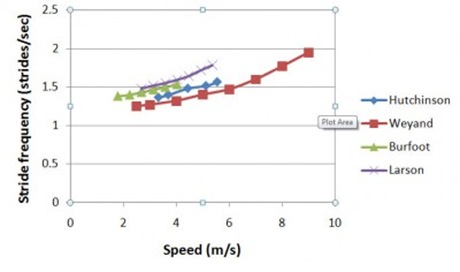
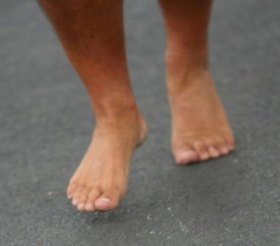

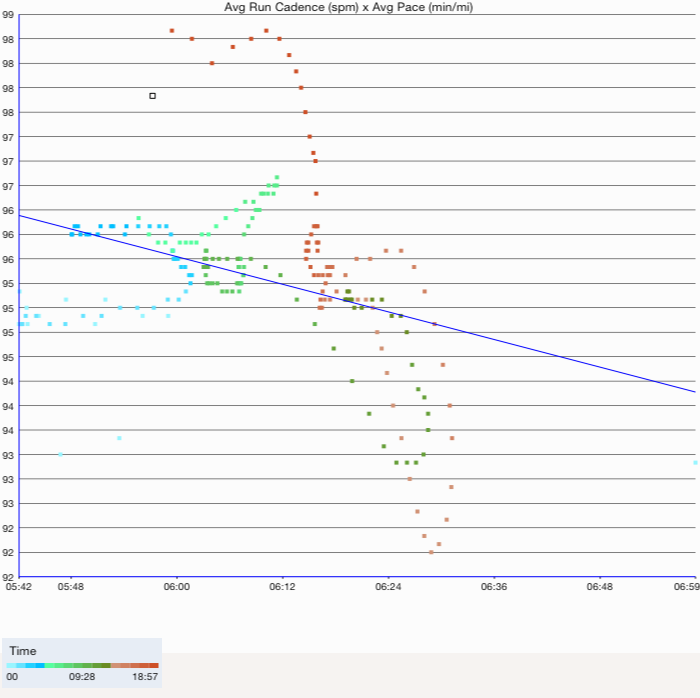
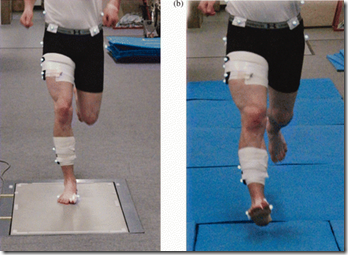














As usual a very interesting article …
Keep on that tremendous work :-)
FRED (http://www.wanarun.net)
Great post, Pete! Thanks for taking the time to articulate your thoughts on these issues. I agree with just about everything you wrote. But I had a thought about the issue you cover near the end.
With respect to your wife and the hip pain she experiences when running, I’m not sure that I would respond as you have. You see her running situation as a problem and you want to help solve it. (Which would be my first instinct as well!) But I’ve learned something over…well, many years of marriage. It’s possible that the best response to your wife might NOT be thoughts on to solve the “problem.” (I know. It’s perplexing. But I think it’s one of the ways that women can be different from men.) Even if you know how to solve the problem, she might just want you to listen. It’s possible that she might not want advice or science. Sometimes it’s better to empathize, and not try to “Fix” the problem. (Even when you’re pretty sure you can!)
I guess this is getting far afield of the subject of running shoes, stride, and biomechanics. Certainly your suggestions would be welcomed by most runners you might know from training or weekend races. But with your wife, different rules might apply.
Just a thought.
Anyway…keep up the great posts…and best of luck as you get closer to your upcoming marathon!
Ken,
Yes, it’s a tough situation, but one that I think she is looking for
help with. She’s definitely open to ideas, and really just wants to be
able to run. I suggested she try using the jogging stroller with the
baby since when I used it it seems to force me to shorten stride since
I’m pushing. It’s a start!
Pete
On Tuesday, September 21, 2010, Disqus
Pete,
Thank you for writing this article! I’m not a competitive runner. I simply run for fun and I’m one of those people that until born to run came out and people like Danny Dryer started taking their beliefs to the masses, just wasn’t able too. So, whether or not you agree with them they do deserve credit for at least helping to change the direction of running for so many in a positive direction.
I think in a lot of sports the breakthroughs start at the elite end and filter down. I do a lot of technical diving and can say without a shadow of a doubt that any of the skills/equipment that are currently de facto standard were once only used by the elite divers doing major exploration dives.
Food for thought…
Eoin
Great post! I agree that elites knowledge and training methods have preceded and influenced the minimalist running movement (e.g. Stanford University’s track teams historic use of barefoot running to strengthen their runners’ and improve their form), *but* that it took the book “Born to Run”, companies such as Newton, and the Web (i.e. running targeted blogs, podcasts and videos) to effectively spread the word to the non-elites that *running form matters*, and that conventional running shoes have been contributing to the running injuries problem.
In your blog post yesterday you’d referenced the excellent Living Barefoot podcast, where there’s a couple of interviews which relate to other points that you’d made on today’s blog. First, I was very happy to hear Dr. Mark Cucuzella talk favorably about Evolution Running (which I follow) along with Pose and Chi. It’s interesting, because he cited ER as being more suited for the performance-focused runner than the other two – though acknowledged there’s value in learning all three methods (which is good, as I see the differences as subtle, and ER’s DVD has been more helpful than other videos or books that I’ve found.)
Secondly, the interview with Jason Robillard might be applicable as regards your wife. Jason expresses a *very* interesting perspective which I’d never previously heard or considered, as it initially seems a bit counter-intuitive. He recommends all runners interested in transitioning to a minimalist shoe *first* learn to run barefoot, given the fact that as afferent feedback is maximized the individual will quickest adapt their stride to an improved rapid cadence, forefoot/midfoot landing. This adaptation requires no explanation or thought, as the foot and the body will – defensively! – make these changes, and after the individual appreciates how their form has changed (a before and after video might be useful) then they may be more open to the minimalist shoes alternatives and their advantages/disadvantages.
Good luck!
Mark,
Jason’s recommendation is actually fairly common among bare footers
that I know – they suggest that by running barefoot you immediately
know what proper form should be. In most cases I would agree, and I
had suggested that my wife try it on the treadmill. That being said,
even Daniel Lieberman observed some Kenyans who had never worn shoes
were heel striking barefoot. It’s a good approach in many cases, but
may not work 100% of the time.
Regarding style methods, I think it’s probably reasonable to study
them all to a degree, and take what you can from each. They converge
on a lot of things, and differ on others. There are some things I
agree with, some things I don’t. The important point is to educate
oneself, and don’t take any expert’s word at face value. Experiment
and confirm form recommendation for yourself, and I think you can
probably avoid most problems.
Pete
On Tuesday, September 21, 2010, Disqus
Good advice Pete,
I have spent the last two years trying out different running methods, starting with Pose then trying ChiRunning, Evolution running, Gravity running, BK method and Dr Yessis before coming across Steve Magness!
I pretty much did as you are recommending, experimenting, using stuff that works and dismissing things that hurt my body or slowed me down.
You might find Tony Benson’s website of interest.
link to changing running form video
link to benson.com.au…
Pete,
I wanted to touch on one point about the Pose and Chi guru’s methods, that both you and Steve have taken to task. The claim is that proper running technique means that you land directly under your Center of Mass. I believe you both have accurately shown this to be an incorrect assessment of what actually occurs during the landing phase and you both have acknowledged that this may just be a useful cue to help over striding runners take shorter steps landing closer to their COM. Obviously, cues like this are used all the time by coaches to elicit a change in an athlete’s technique and they function as a mental reminder for an athlete mid workout. As a coach, you’ll often have to adjust these cues until you find one that really clicks with a particular athlete, but these cues do not always accurately describe what is ‘actually’ supposed to occur in a running stride.
The problem arises when these cues are taken out of the workout context and used as clinical descriptors of proper technique. I think the root of this problem is that the primary goal of the Chi and Pose methods are to reach as wide an audience as possible, to sell books, videos, etc. and not coach individual runners on a case by case basis. Because of this the gurus must find and stick with a single cue or set of cues. These cues may be effective for a great many people, but they don’t have any place in a discussion geared towards defining proper mechanics. Because the cue must, for the purposes of marketing clarity, be used in all discussions about their product lest they get “off message” or muddle their brand identity and potentially confuse their audience it winds up working its way into such discussions where the goal isn’t to remind an athlete to take a shorter stride, but to define the actual bio-mechanics of correct running form. Ultimately while this may be an effective marketing technique it isn’t a personalized approach to coaching better mechanics or an accurate way to define what actually should be occurring during the running stride.
Tait
http://teamfirspring.com
Tait,
I have thought the exact same thing, particularly since I was
questioned by some of e Pose and Chi folks after I wrote my center of
gravity post. Some people seem to cling to ideas even when they may
not be right because to admit one is wrong can make you look bad. One
of the things I always tell my students is to tell me if I make a
mistake, and not to take what I say as a professor as dogma. We are
all fallible, and it says a lot when you can admit you were in error.
In fact, learning from our mistakes is one of the best ways to move
forward and advance understanding. If someone sent me a video showing
a runner moving at steady speed contacting directly under the center
of gravity I would have posted it – I haven’t gotten one yet.
Pete
On Tuesday, September 21, 2010, Disqus
In the Newton video he tells you to lean forward at the waist!!!
That is aweful advice and will lead to lower back problems!
For me (a “recreational self-competitive runner” like you), the breakthrough is that Born to Run and the recent discussions make me now feel comfortable experimenting with minamlist footwear. I started running seriously about five years ago and gravitated towards ligher, “performance neutral” shoes, even though I am a slight overpronator. But I never went too far. The magazines and running store gurus lead me to believe that just glancing at a racing flat or high performance trainer would would leave me with crippling injuries. I’ve found just the opposite to be the case – less and less footwear has led to no injuries and the liberating sense of less gear.
I enjoy your blog. Keep up the great work!
My experience exactly!
Pete
On Tuesday, September 21, 2010, Disqus
Pete,
I just wanted add my two cents. I’m so glad that you wrote this. I think your main points are spot on.
Gravity is certainly a vertical force. The point is that with a forward lean, you are shifting mass in front of your COM. Thus, there is a component of the gravitational force that is in the direction of travel. Does this provide all the propulsion for efficient runners? Not likely. The key is learning to store this energy as efficiently as our muscles have evolved to allow. Eliminating braking forces in the stride can do as much as exerting more propulsive forces. So the question is does maximum energy storage occur when the foot lands underneath the COM as opposed to slightly in front? I haven’t seen data that specifically measure this, so until then all discussion is purely conjecture. How static forces interact with the energy storage and release of the muscles in the foot and legs is complicated.
I’ve just read this post, so a rather late reply. I’m runner with an engineer degree so hopefully well placed to clear up what is happening w.r.t gravity, centre of mass and propulsion.
First up it’s physically impossible to land with your foot underneath your centre of mass when running at a steady state (constant speed), if you did you’d fall forward right on to your face as your foot would be apply an upward force behind your centre of mass (COM) and producing a rotational moment about the COM. All runners no matter whether they heel strike or land on the forefoot, fast or slow cadence all land with the foot in-front of the COM and lift off with the foot behind the COM, on average the foot will be roughly beneath the COM in all cases. Not only does have to be the case from a Newtonian mechanics perspective, i.e. we don’t break laws of physics every time we run, but also the scientific analysis of running form, and video evidence provided online all show this to be the case.
Landing with your foot below the COM only can happen when you running into a strong wind (which balances the rotation moment) or when you are accelerating. In the later case it isn’t gravity that is providing the horizontal force, but the your leg muscles that are pushing against the ground and against gravity. As Peter has said gravity provides vertical force, it can only accelerate you one way – downwards. Without gravity we wouldn’t have an grip, and nothing to push off against with a legs, but in the end it’s the legs doing all the work in accelerating or decelerating you horizontally.
Finally we can wrap things up by looking at the energy perspective, you can convert gravitational energy into kinetic energy if your COM drops. Think about a sitting on a slide you are able to convert your gravitational potentially energy into forward speed as you get a horizontal reaction force from the slide to propel you forward as well. Might this be happening when we give ourselves that forward lean when we start running? Converting gravitation energy into kinetic energy? Well this would only work if our COM stayed lower than our standing COM, but… when you run you’re actually bouncing from one leg to another, and you spend most of the time in the air, which means… that your COM is higher than your are when you are standing still. Think about the slide again… you only get speed from your mass dropping, but when you run your average COM is higher so clearly we’ve had to put energy into raising our COM as well as accelerating us from standing.
Hopefully this will clear up the issue of energy and COM. No one can run land with foot beneath their COM unless they are accelerating or into a strong headwind. And gravity provides us with absolutely no propulsion whatsoever, quite the contrary, gravity is what runners have to fight against when accelerating on every stride thereafter.
If this wasn’t so then we’d have the heaviest people winning all the races… ;-)
Robert,
Thank you for the excellent explanation! Helps to have someone explain from
a physics/engineering perspective.
Pete
First time visitor. This is a great site. Very inspirational for my training.
Todd
http://allprosupplements.com
I am also think in a lot of sports the breakthroughs start at the elite end and filter down.This is such a beautiful post,and Congratulations.
Pete,
I just want to say that I have really enjoyed reading your posts. I just got back into running 4 months ago after reading Born to Run. I had run for years in junior high and high school – moderately fast but with terrible heel striking form. By the time I was 18, I had to give up running due to knee and hip pain and switched to racing bikes. Over the past 17 years since then, I have tried to take it back up a few times but quickly the pains returned. After reading Born to Run, I was reinspired to give it one more try, this time in VFFs and really focusing on my mid-foot landing form (and taking it slow). After a couple of months of seriously tired and sore calves, I am still injury free and getting ready for my first race in years next week (Freedom’s 1/2 marathon in sheperdstown WV). It’s been amazing to rediscover running and be able to do it again. I still have a long way to go to get back into the race times I’d like to see (hoping for about 1:40 in the race this week) but the quick improvement has been fun to see.
Thanks for the inspiration in your posts.
Owen
Owen,
Great to hear it – keep working at it and hopefully things will continue to
improve. Good luck at Freedom’s run – I’ve heard a lot about it and imagine
it will be a great event – get that 1:40!
Pete
For your wife: I’ve dealt with chronic hip pain, no fun. (Well actually my pain is in the iliac crest region), but I have solved that issue with barefoot running form. When I get tired and my form suffers, my pain comes back; as long as I watch my form, no pain and I can keep running.
As a teacher of the Alexander Technique, I feel that the best way to really improve running is to work on resting posture, and posture is only improved by learning to stop doing the things that interfere with the dynamic, reflex relationship between all muscles. Doing things like trying to shorten the stride so that the foot lands under the body are merely ways of compensating for poor posture, and ultimately result in increased effort (although there may be short term benefits).
http://www.alexandertechnique-running...